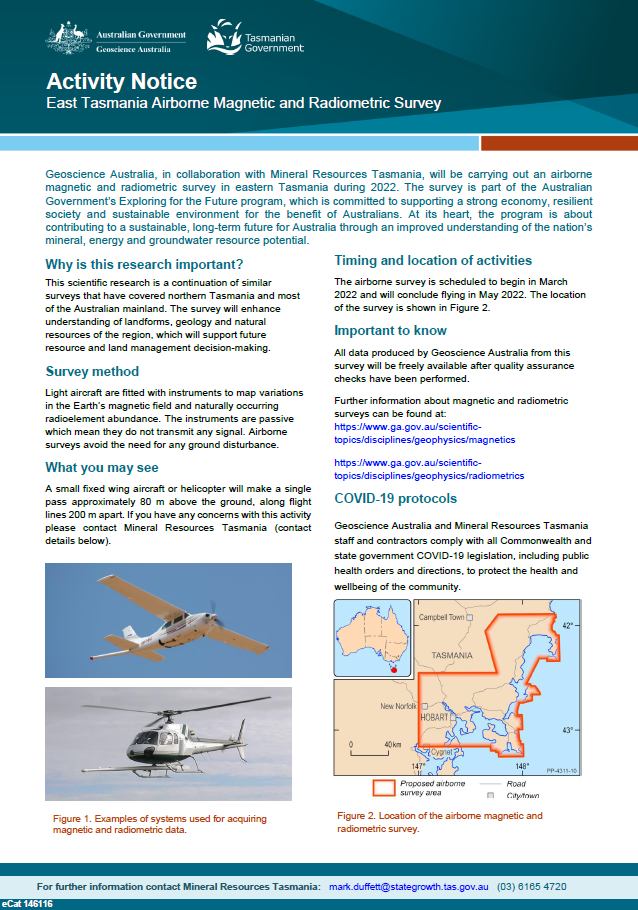Hobart
Type of resources
Keywords
Publication year
Topics
-
Knowledge of the nature of buildings within CBD areas is fundamental to a broad range of decision making processes, including planning, emergency management and the mitigation of the impact of natural hazards. To support these activities, Geoscience Australia has developed a building information system called the National Exposure Information System (NEXIS) which provides information on buildings across Australia. Most of the building level information in NEXIS is statistically derived, but efforts are being made to include more detailed information on the nature of individual buildings, particularly in CBD areas. This is being achieved in Hobart through field survey work.
-

Geoscience Australia, in collaboration with Mineral Resources Tasmania, will be carrying out an airborne magnetic and radiometric survey in eastern Tasmania during 2022. The survey is part of the Australian Government’s Exploring for the Future program, which is committed to supporting a strong economy, resilient society and sustainable environment for the benefit of Australians. At its heart, the program is about contributing to a sustainable, long-term future for Australia through an improved understanding of the nation’s mineral, energy and groundwater resource potential. <p>
-
<div>The integrity and strengths of multi-technique terrestrial reference frames such as ITRF2020 depend on the precisely measured and expressed local tie connections between space geodetic observing systems at co-located observatories. A local tie survey was conducted at the Mount Pleasant Geodetic observatory, in Hobart in March 2023. The aim of the survey was to precisely measure the local terrestrial connections between the space-based geodetic observing systems co-located at the observatory, which includes a permanent International GNSS Service (IGS) site (HOB2 A 50116M004), and Very Long Baseline Interferometry (VLBI) radio telescopes. In particular, this report documents the indirect measurement of the VLBI invariant reference point for both the 12m (7374 A 50116S007) and 26m (7242 A 50116S002) radio telescopes at the site. Geoscience Australia has routinely performed classical terrestrial surveys at Mount Pleasant since 1995. A high precision survey was conducted between the survey pillars surrounding the observatory. These survey pillars were monitored to ensure their stability as part of a consistent, stable terrestrial network from which local tie connections were made to the VLBI and GNSS systems. The relationship between points of interest included the millimetre level accurate connections and their associated variance covariance matrix.</div><div><br></div>
-
Knowledge of the nature of buildings within CBD areas is fundamental to a broad range of decision making processes, including planning, emergency management and the mitigation of the impact of natural hazards. To support these activities, Geoscience Australia has developed a building information system called the National Exposure Information System (NEXIS) which provides information on buildings across Australia. Most of the building level information in NEXIS is statistically derived, but efforts are being made to include more detailed information on the nature of individual buildings, particularly in CBD areas. This is being achieved in Hobart through field survey work.
